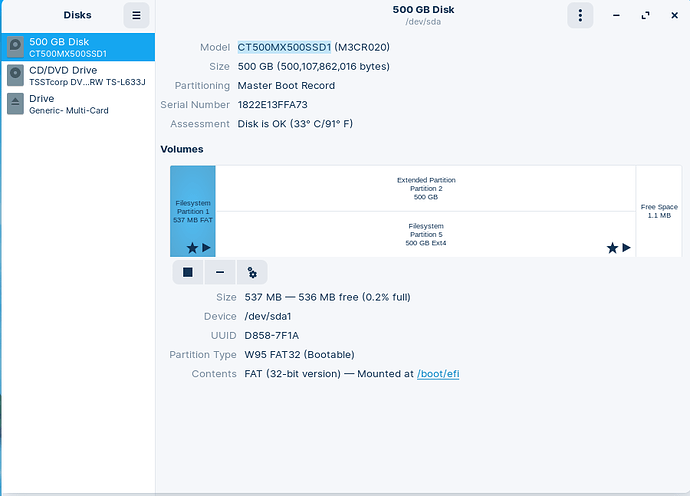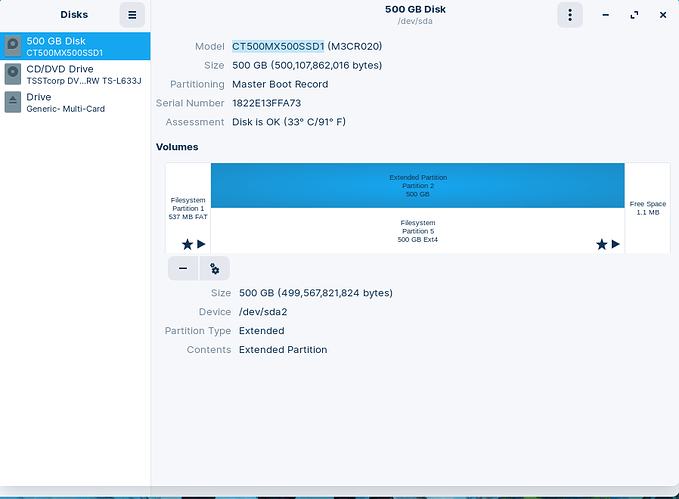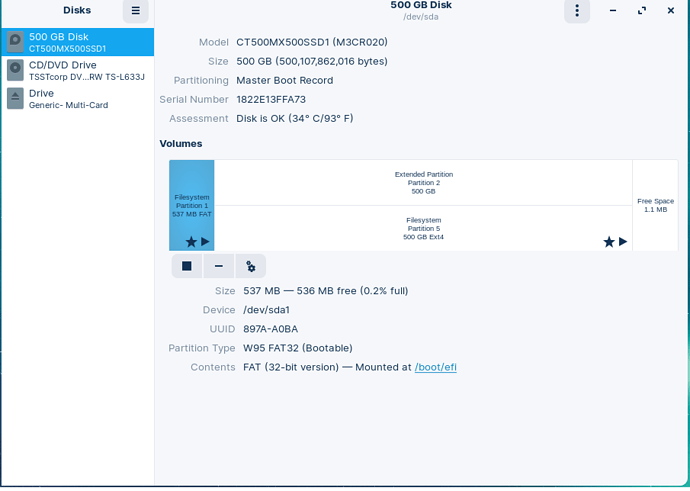I am using Zorin on a Dell Inspiron Laptop 8gb RAM Intel P6200@2.13ghz and a 500gb SSD. Last year I bought Zorin 15 Ultimate and was very happy with it but after a few weeks it began to slow down eventually I had to do a reinstall and the same thing happened again. A few weeks ago I installed Zorin 16 Beta and the same thing has happened again, it slows down so much that I can wait up to 10 seconds for a program to open. If I have two windows open it grinds to a halt.
Any help would be appreciated.
Do you have enough space allocated for your Zorin installation? Also when your system is slowed down, open the System monitor app and see if any particular application has a high CPU/RAM/Disk read-write usage. If yes what applications are they?
As an aside, others have noted in the past that Dells Inspiron and Latitude seem to have some specific kernel demands. What is your output from
uname -a
Thanks for the reply here is the output from uname -a.
Linux zorin-Inspiron-N7010 5.8.0-55-generic #62~20.04.1-Ubuntu SMP Wed Jun 2 08:55:04 UTC 2021 x86_64 x86_64 x86_64 GNU/Linux
Could you give me the output of
df -h
Thanks for the reply here is the output.
df: /run/user/1000/doc: Operation not permitted
Filesystem Size Used Avail Use% Mounted on
udev 3.8G 0 3.8G 0% /dev
tmpfs 776M 3.2M 773M 1% /run
/dev/sda5 457G 29G 406G 7% /
tmpfs 3.8G 86M 3.8G 3% /dev/shm
tmpfs 5.0M 0 5.0M 0% /run/lock
tmpfs 3.8G 0 3.8G 0% /sys/fs/cgroup
/dev/loop0 33M 33M 0 100% /snap/chromium-ffmpeg/17
/dev/loop1 100M 100M 0 100% /snap/core/11187
/dev/loop2 100M 100M 0 100% /snap/core/11167
/dev/loop3 56M 56M 0 100% /snap/core18/1997
/dev/loop4 62M 62M 0 100% /snap/core20/1026
/dev/loop5 66M 66M 0 100% /snap/gtk-common-themes/1515
/dev/loop6 151M 151M 0 100% /snap/opera/127
/dev/loop7 56M 56M 0 100% /snap/core18/2066
/dev/loop8 65M 65M 0 100% /snap/gtk-common-themes/1514
/dev/loop9 296M 296M 0 100% /snap/vlc/2288
/dev/loop10 62M 62M 0 100% /snap/core20/975
/dev/loop11 302M 302M 0 100% /snap/telegram-desktop/2619
/dev/loop12 296M 296M 0 100% /snap/vlc/2103
/dev/loop13 33M 33M 0 100% /snap/snapd/12159
/dev/loop14 302M 302M 0 100% /snap/telegram-desktop/2637
/dev/loop15 33M 33M 0 100% /snap/snapd/12057
/dev/loop16 163M 163M 0 100% /snap/gnome-3-28-1804/145
/dev/loop17 151M 151M 0 100% /snap/opera/128
/dev/sda1 511M 4.0K 511M 1% /boot/efi
tmpfs 776M 72K 776M 1% /run/user/1000
It looks like Linux is installed in the extended partition, not in the primary partition. Is there any reason you need to install that way?
This is how it looks like for my system.
I have a swap partition because of VMWare. But normally it is not needed since there would be a swap file in the system directory.
How did you install Zorin? Did you partition the system yourself or did you let Zorin do it? If you partitioned it yourself, did you make a swap space? I'm just speculating but it could be from that.
I let Zorin do the install.
Thanks, I let Zorin do the install.
I let Zorin do the install, your disk version does look better.
It reminds me of how my daughter in law installed her Linux Mint. She let the installer to do its job, and ended up installing in the extended partition.
If I were you, I would back up the home directory and do the clean install. It would be much easier than trying to fix this.
It is better to format the entire drive with Gparted in Zorin live usb before starting the installation process.
While doing a clean install it will be better to add few gigs of swap area.
I also have 8gb ram and I have 3gb of swap area.
It depends on whether you need to install application which requires swap partition or not.
If you have no plan to install such applications, swap file is enough. Swap file will be installed automatically during installation and there is no need to add it manually.
How do you decide an application needs swap area? Does chrome need that?
In that case, my theory is false. When you do the default installation, Zorin automatically creates a Swap space.
It is automatically handled by the OS you don't have any direct control over it. If you want to learn more about swap space in Linux, take a look here.
@PeterBez I think you should try to narrow the problem down a bit. Are you certain that your system becomes slower over time and it is not because of over heating or some heavy apps running in the background? Keep in mind that a fresh OS always runs faster, because it there are not many applications on it. Eventually, as the user adds more applications, the OS will become heavier and slower.
According to the screen shots you sent the extended partition is not zorin. What you have is an efi setup with mbr... which a lot of people have been having issues with and this is not recommended. If windows was installed in legacy (mbr) and you installed zorin in uefi, this can cause issues. If your system supports uefi there is no need to install in legacy. The only way i know how to repair this is a clean install. Only choose legacy if your system doesn't support uefi. The standard swap partition, created as part of the root partition, is more than enough since you are asking whether you use virtual machines. You do if you develop applications or install a vm to host another os in your current os. It sounds like you don't do either.
I also would like to add, it is possible to create a swap partition later if ever needs arise. To do that, boot the system from live USB and edit partition with Gparted. Boot from the internal disk, edit fstab and update grub. Multiple steps required but it is doable.




